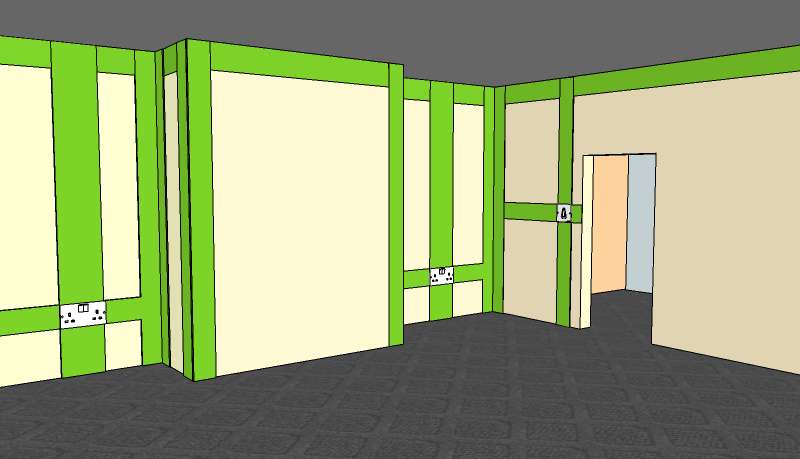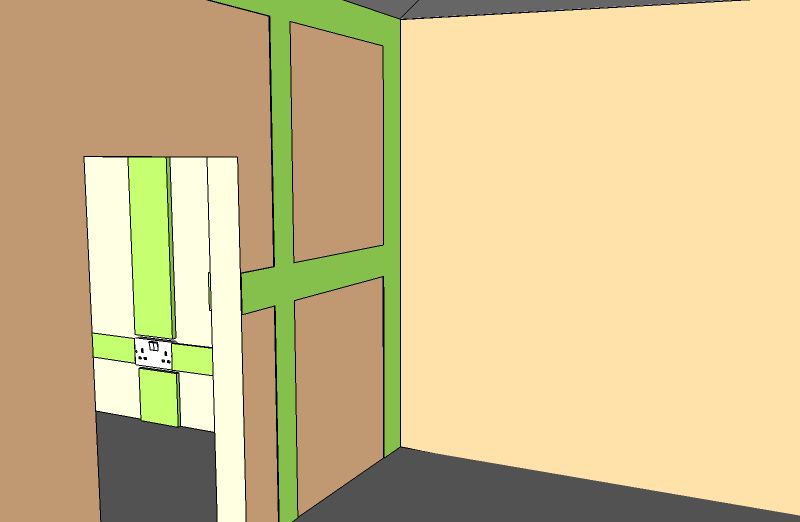Difference between revisions of "Safe zones for electric cables"
Jump to navigation
Jump to search
ARWadsworth (talk | contribs) |
(→The safe zones for cables concealed in walls are: added pics.) |
||
| Line 8: | Line 8: | ||
*a vertical zone within 150mm of the angle formed by two walls | *a vertical zone within 150mm of the angle formed by two walls | ||
| − | *the horizontal and vertical zone to | + | *the horizontal and vertical zone adjacent to a visible electrical accessory (switch, socket, cable outlet etc) |
| − | + | [[Image:Cablezones1.jpg]] | |
| + | *where an accessory on the reverse side of the wall can be easily determined, e.g. through a door or archway, and the wall or partition depth is 100mm or less, then the horizontal and vertical zones to that accessory apply to both rooms: | ||
| + | [[Image:Cablezones2.jpg]] | ||
| + | =See Also= | ||
| + | * [[Special:Allpages|Wiki Contents]] | ||
| + | * [[Special:Categories|Wiki Subject Categories]] | ||
| + | * [[Cables]] | ||
| + | * [[Electrical Installation]] | ||
| − | + | [[Category:Electrical]] | |
| − | |||
| − | |||
| − | |||
| − | |||
| − | |||
| − | |||
| − | |||
| − | |||
| − | [[Category: Electrical]] | ||
Revision as of 19:02, 20 October 2010
Electric cables are usually run in prescribed safe zones. Knowing where these zones are allows you to correctly install cables and help eliminated damage to them when drilling walls at a later date
The safe zones for cables concealed in walls are
- a horizontal zone within 150mm of the top of a wall
- a vertical zone within 150mm of the angle formed by two walls
- the horizontal and vertical zone adjacent to a visible electrical accessory (switch, socket, cable outlet etc)
- where an accessory on the reverse side of the wall can be easily determined, e.g. through a door or archway, and the wall or partition depth is 100mm or less, then the horizontal and vertical zones to that accessory apply to both rooms:

